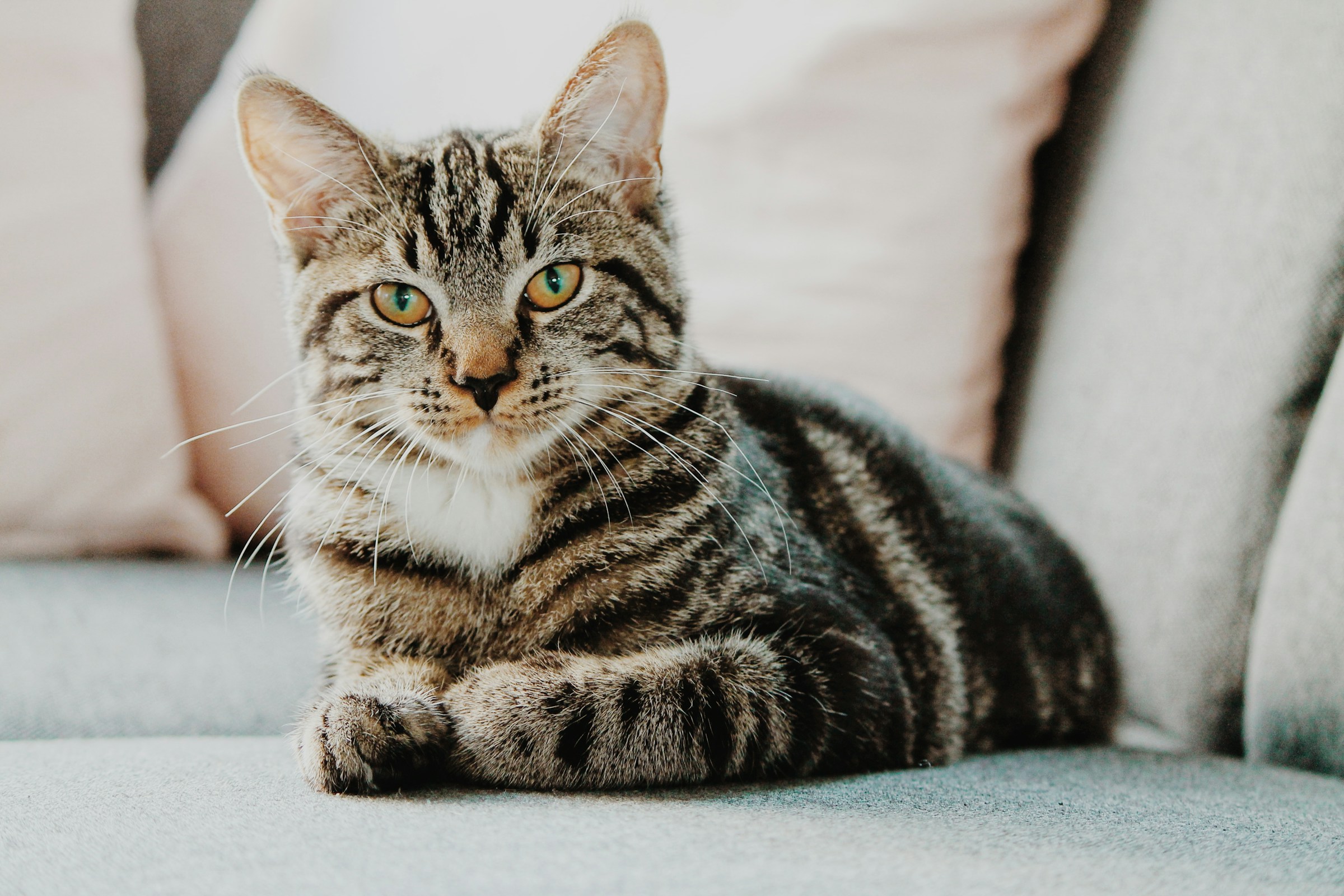Navigating the world of cat food can sometimes feel like you need a special decoder ring, can’t it? Alex Rivera here, your veterinary nutritionist from sunny California. With three years of practice under my belt, and as a dad to Breene, my own discerning Bengal cat, I’ve spent countless hours helping pet parents make sense of what’s actually in their feline friend’s bowl.
Choosing the right food is a cornerstone of their health and happiness, and understanding the label is the very first step. It’s just as important as asking how much should I feed my cat? to ensure they get the perfect amount.
So, let’s break down that label together, section by section, so you can feel confident in what you’re feeding your purring companion.
The product name and the AAFCO statement: what do they really mean?
The product name itself can give you clues, but it’s the nutritional adequacy statement from Association of American Feed Control Officials (AAFCO) that’s truly golden. This statement usually says something like, “[Product Name] is formulated to meet the nutritional levels established by the AAFCO Cat Food Nutrient Profiles for [life stage, e.g., ‘adult maintenance,’ ‘growth,’ ‘all life stages’].”
- Complete and balanced. If you see this, it means the food, when fed as the sole diet, is designed to provide all the necessary nutrients for a specific life stage. For kittens or pregnant/nursing queens, the needs are different than for an adult cat, much like we see different needs in common senior dog behavior problems that can sometimes be linked to changing nutritional requirements.
- Intermittent or supplemental feeding only. This means the product is not a complete diet and is intended as a treat or to be fed alongside a complete and balanced food.
Understanding these AAFCO terms is key. Making informed choices here is a key part of how to create a pet-friendly home environment.
The ingredient list: decoding what’s inside
This is where many cat parents focus, and for good reason. Ingredients are listed in descending order by their pre-cooking weight. Here’s what to look for:
- Meat meal vs. whole meat. “Chicken meal” for example, is rendered chicken with most of the water removed. It’s a concentrated source of protein and can be a quality ingredient.
- By-products. “Meat by-products” or “poultry by-products” can be controversial. They are the non-rendered, clean parts of slaughtered animals, often including organs, which can be nutritious. The concern is variability. If used, ideally, the specific animal source (e.g., “chicken by-products”) should be named.
- Grains and fillers. Some cat foods include grains like corn, wheat, or soy. While not inherently bad for all cats (unless a specific allergy exists), their quantity and quality matter. We’ve looked into similar topics like is corn good for dogs? a vet nutritionist’s view, and the principle of overall dietary balance applies to cats too. Cats generally thrive on diets higher in protein and lower in carbohydrates.
- Vitamins and minerals. You’ll see a long list of these, ensuring the food is fortified to meet AAFCO profiles.
- Taurine. This amino acid is absolutely essential for cats – for vision, heart health, and more. It must be present in their diet.
Proper nutrition also influences things like coat health, which is linked to preventing issues we cover in how to spot and prevent common skin issues in dogs (and cats experience similar diet-related skin benefits).
The guaranteed analysis: protein, fat, fiber, and moisture
This section provides the minimum percentages of crude protein and crude fat, and the maximum percentages of crude fiber and moisture.
- Crude protein. For cats, higher protein is generally good. Adult cats typically need at least 26-30% protein on a dry matter basis (DMB), with kittens needing more.
- Crude fat. Fat provides energy and essential fatty acids. A moderate amount is important.
- Crude fiber. Fiber aids in digestion. If you’re ever concerned about your pet’s fiber intake, there are ways to address it, similar to what’s discussed in how to add fiber to your dog’s diet, though specific cat needs should be discussed with your vet.
- Moisture. This is particularly important when comparing dry food to wet food. Wet food naturally has a much higher moisture content (e.g., 75-80%) compared to dry kibble (e.g., 10-12%).
To truly compare protein or fat levels between, say, a dry food and a canned food, you’d ideally convert them to a “dry matter basis.” This involves mathematically removing the moisture content from the calculation. Many online calculators can help with this, or your vet can explain it.
Feeding guidelines: a starting point, not a strict rule
The label will provide feeding guidelines, usually based on your cat’s weight. These are just suggestions. Your cat’s individual needs will vary based on their age, activity level (Breene, for example, is quite active and has different needs than a more sedentary cat), metabolism, and environment. Monitor your cat’s body condition and adjust portions accordingly. This is where using tools like smart collars in pet care could, in the future, help track activity and caloric burn even for cats.
Calorie statement (kcal/kg and kcal/cup or Kcal/can)
This tells you how energy-dense the food is. Knowing the calorie content is crucial for managing your cat’s weight and ensuring you’re not over or underfeeding. This directly ties into ensuring their overall well-being, which even includes their dental health, a topic we cover in how to keep your dog’s teeth clean at home (and similar principles apply to feline friends!).
Understanding buzzwords: “natural,” “organic,” “human-grade”
- Natural. According to AAFCO, “natural” means a feed or ingredient derived solely from plant, animal, or mined sources, not having been produced by or subject to a chemically synthetic process and not containing any additives or processing aids that are chemically synthetic (except in amounts as might occur in good manufacturing practices).
- Organic. For a pet food to be labeled “organic,” it must meet the USDA’s National Organic Program standards, similar to human foods.
- Human-grade. This term can be tricky. Legally, for a pet food to claim it’s “human-grade,” every ingredient and the facility where it’s made must meet federal standards for human food. Not all foods claiming this strictly adhere to the full legal definition.
- Holistic. This term has no legal definition in pet food, so it’s largely a marketing term.
Always look beyond these terms and focus on the actual ingredient list and guaranteed analysis. Good nutrition is a part of overall care, just like the importance of regular grooming for your pet’s health, or even knowing how to clean your pet’s ears safely at home.
When in doubt, ask your vet
Reading cat food labels can seem daunting, but understanding these key components empowers you to make better choices for your feline family member. Each cat is an individual, and what works for one might not be best for another. If you’re ever unsure about what to feed your cat or if your cat has specific health concerns, please consult with your veterinarian. They can help you choose the most appropriate diet. Options like telemedicine in veterinary care can also be a great way to have these discussions. And remember, selecting the right food is as vital as knowing how to choose safe toys for your pet to ensure their safety and happiness. Sometimes, more advanced dietary planning is needed, and that’s where tools like AI in veterinary diagnostics might even play a future role in personalizing nutrition plans. For now, a keen eye on the label and a good relationship with your vet are your best tools.

Alex Rivera, a veterinary nutritionist with 3 years of experience in the field. Owns 5 pets of his own; a Burmese python (named Venim), a german shepherd (named Rust), two parakeets (named Whistle and Roberts), and a bengal cat (named Breene).
